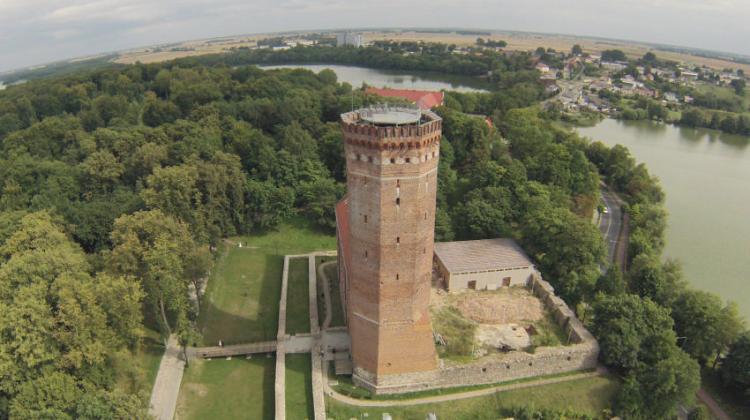Papal bulla discovered in the Człuchów castle

Lead bulla of Pope Gregory XI (Pope from 1370 to 1378) has been dug up by archaeologists during wide surface excavations within the Człuchów castle (Pomerania), the second largest Teutonic fortress after Malbork.
"This is a very unique find, although the number of bulls issued for the Polish lands in the Middle Ages exceeded 4000. They concerned the establishment of bishoprics, episcopal appointments, crusade proclamations and other matters requiring certification by the Pope" - said Dr. Michael Starski, head of research, employee of the Institute of Archaeology, University of Warsaw.
Papal bull is named after the seal, bulla, that was appended to the end in order to authenticate the document. In the case of the Człuchów discovery, only the seal was preserved.
According to the researchers, the bull most likely concerned the Teutonic state, but the content of the document remains unknown. Archaeologists spotted remains of rope or strap on the bulla, which was used to append it to the document. The bulla has a diameter of 3.6 cm and is made of lead alloy. The papacy of Gregory XI, who issued the document with the discovered bulla, was the heyday of the Teutonic Order, as well as another phase of the crusades against pagan Lithuania. The object was excavated in the north-western corner of the cloisters of the Człuchów castle.
On the reverse of the bulla is the inscription *GREGORIUS*PP*XI*, and on the obverse the faces of two men, separated by a cross, and on top the letters SPA*SPE, referring to the Saints Peter and Paul. "This is a typical iconography of papal bullas" - commented Dr. Starski.
This year\'s archaeological season in Człuchów began in March and will continue until July. The priority for the scientists is to uncover the whole area of the High Castle, including the courtyard, and the old castle wings demolished in the late eighteenth century. In the days of the Teutonic Knights, the castle was the seat of the convent and the commander of Człuchów. The castle probably consisted of four two-storey buildings forming four wings, built on a square plan with a side of 47.5 m, with an inner cobbled courtyard and cloisters. In the north-western corner an octagonal tower was built, which survived to our time, with adjacent chapel from the east. Archaeologists are clearing the area to the basement level - the depth of backfills is some places exceeds 6 meters.
"In the course of painstaking work we discover blocks of masonry and architectural details used in the construction of the fortress: now it is over a hundred different kinds of moldings, ceiling and floor bricks. Were have also found several fragments of stone detail. Without a doubt, this is the largest such collection in Pomerania" - believes the archaeologist.
Within the cloister area, in addition to the bulla, archaeologists discovered several Teutonic, Polish and Prussian coins, as well as many different kinds of ornaments, pins and other daily use items. They unveiled well preserved brick floor and stone pavement in the courtyard.
The research, carried out on behalf of the City in Człuchów, is carried out by the Institute of Archaeology, University of Warsaw. According to Dr . Starski this is the largest ongoing castle archaeological research project conducted in the country. The goal is to prepare the ruins for tourists. After completion of the excavation, exposed walls will be preserved and covered. Date of completion of the revitalization is planned for the end of 2014.
PAP - Science and Scholarship in Poland
tr. RL
szz/ agt/
Przed dodaniem komentarza prosimy o zapoznanie z Regulaminem forum serwisu Nauka w Polsce.















